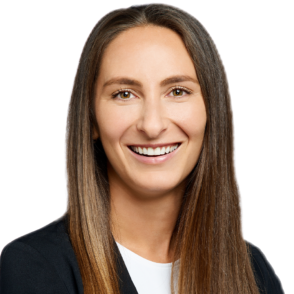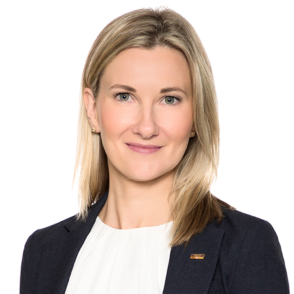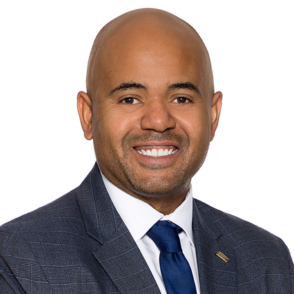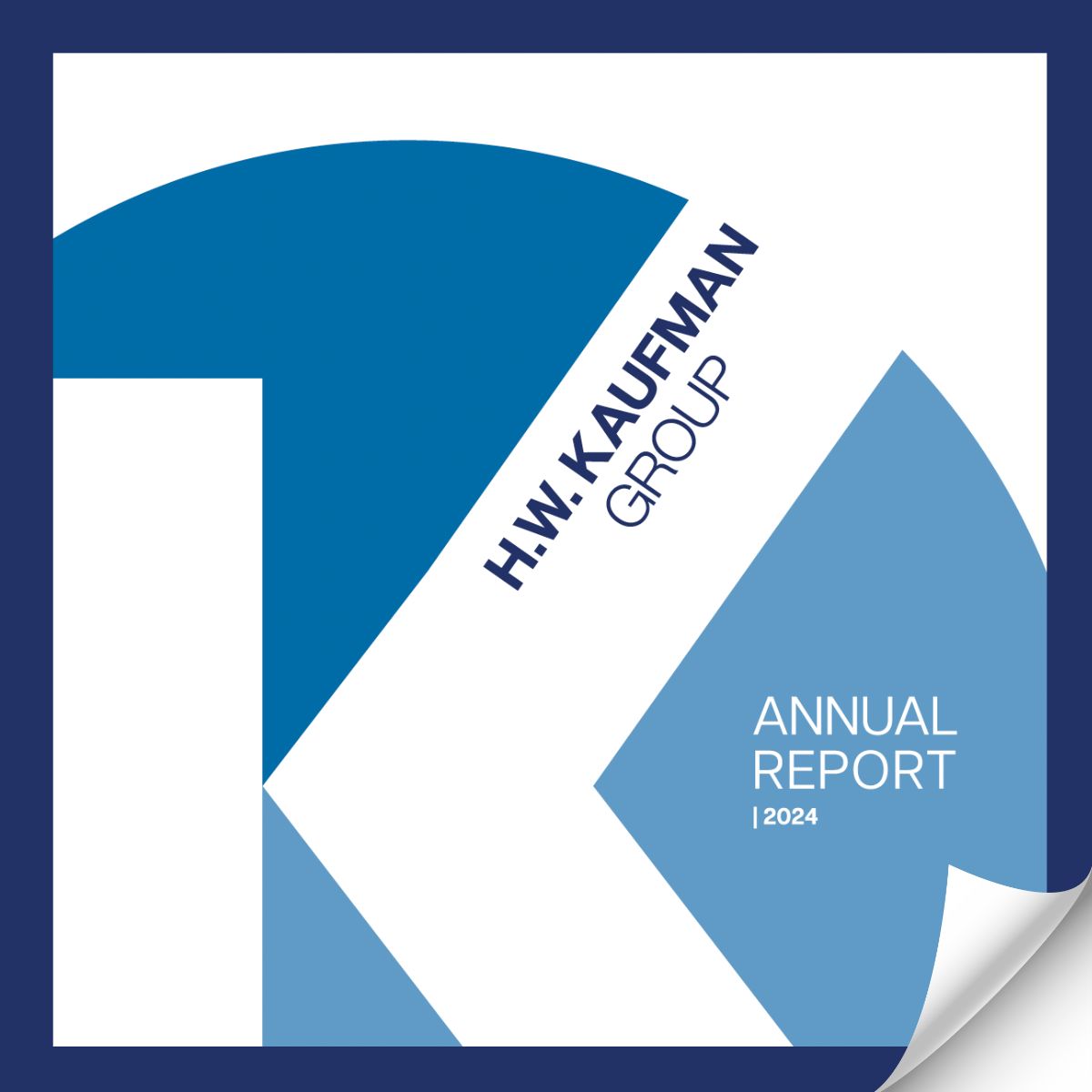Many of the primary factors that influenced the status of the Property & Casualty (P&C) market in 2023 are likely to remain in 2024. We continue to operate in a comparatively hard environment marked by rising but moderating rates on some lines of business, where it is often necessary to layer available capacity that includes carefully worded terms and conditions with exclusions, sub-limits and more. Some of these market pressures will remain the cause of such trends, whether it be rising jury awards, third-party litigation funding that encourages mass tort action or changing weather patterns.
Key Takeaways:
- Auto liability is expected to be under significant exposure duress.
- Claims inflation is real and carrier focus on margins will keep rates generally higher.
- There is a collective sigh of relief following the 2023 Hurricane Season, however, the number of named storms was higher than usual.
- Reinsurance is moderating with the help of annual compounding of rates.
- Capacity should be robust outside of a handful of sectors like liquor liability and CAT-exposed, first-party properties.
- Finally, we can expect falling interest rates and inflation moderation.
ACCESS A PDF VERSION OF THIS REPORT HERE
Claims inflation will continue to linger as well, with a backlog of cases yet to be heard following the 2020 to 2022 legal slowdown because of COVID. Further, adverse developments on many liability claims from 2012 to 2018 are resulting in many carriers re-evaluating various lines of business ending what was a temporary tamping of rates last year. With claims rising, carrier margins remain under pressure from both first-party and third-party lines.
Within the P&C sector, several areas are expected to be under increased exposure duress. One that stands out is Auto Liability claims. The cost of property damage claims from car crashes has increased almost 50 percent from 2018 to 2022, according to a 2023 report from the American Property Casualty Insurance Association (APCIA). Over the same period, the average bodily injury claim cost increased by 40 percent.
As a result, any account with Auto exposure will be highly scrutinized, whether Personal or Commercial. One effect is that average losses for auto claims are skyrocketing. Year to date loss ratio in commercial auto increased to 72 percent in the first half of 2023 as compared to 69 percent in the first half of 2022, notwithstanding further potential deterioration for recognition of reserve deficiencies according to Fitch Ratings. We expect the overall Auto combined ratio (CR) of insurers to exceed 106 percent in 2023, representing 11 of the last 12 years where this important metric has exceeded 100 percent.
There are several reasons why auto policies are facing such strong headwinds. First, Americans are driving more again, basically at pre-pandemic levels. Second, the advanced technology in cars today is expensive to replace following an accident, making claims higher. Third, inattentive driving remains an issue despite a national effort to combat distractions. It should be noted that excess policies that sit above primary policies are similarly exposed to the trend of claim severity—adversely impacting rates and terms and conditions.
Increased exposure in other areas
Automotive is not the only industry sector challenged by increased exposure. Building supply costs, while moderating, remain high. Supply chain issues remain as well. Advanced technology plays a role in both. While supply chains have opened up, the availability of complex high-tech parts like chips that drive many products can be difficult to accrue. This has caused the price of goods to rise in an environment that has experienced persistent inflation over the past two years. Like most costs, payroll inflation has moderated but remains elevated.
It is true that inflation is slowing down, but while a robust economy is good for all, it may signal that higher prices in specific sectors are here to stay. As items and properties maintain or increase their value, careful quantification of exposure, often referred to as Insurance to Value (ITV), will remain a focal point.
2023 storm season recap
Fortunately, there were no hurricanes that had nearly the catastrophic loss of property or life impact in 2023 as we have seen in recent years with Ian in 2022, Ida in 2021, or Harvey, Irma, and Maria in 2017. Only one hurricane made landfall in the U.S. this year. Hurricane Idalia hit a sparsely populated section of the Florida coast in August, causing relatively little property damage. Had the storm veered a bit to either the north or south, well-known places like Tallahassee and Tampa would have been significantly impacted.
However, the season was above normal in terms of activity. There were 20 named storms that formed in the Atlantic basin. That is the fourth-highest number in a single year since 1950, according to National Public Radio (NPR). The National Oceanic and Atmospheric Administration has stated an average season has 14 named storms, seven hurricanes and three major hurricanes. So, while the 2023 Atlantic Hurricane season may have appeared benign, underlying data evidenced all the ingredients for a much different result.
Reinsurance outlook
Moderation is also expected in the reinsurance market compared to recent years, especially on the Property side. Whether the same can be said of Casualty remains to be seen.
One reason for this moderation is that the consistent year-over-year compounding of rates may have finally hit a relative level of equilibrium. At some point, the market will demand some price containment, and 2024 may have marked that tipping point. Rates may continue to rise, but any increases are expected to be smaller compared to recent years.
To summarize, the industry is demanding the inclusion of more accurate exposure information and more certainty with the underlying exposure base as mentioned above. Furthermore, the reinsurance market is reporting premium adequacy in many, but not all areas.
Industry predictions and expectations
In December AM Best revised its outlook for the Excess & Surplus (E&S) lines insurance segment to positive from stable. The rating agency referenced an expected increase in business due to declining capacity in Commercial lines and some Personal lines markets from the admitted marketplace. It also predicted strong underwriting results would drive profitability and strong capital positions, largely driven to the freedom of rate and form in the E&S sector.
Specialty insurance carrier WR Berkely Corporation’s CEO, William Berkley, Jr. said during a Q3 2023 conference call that the company will remain “very focused” on social inflation, which likely will be a factor for several years. The specialty sector may be in a good position though for long-term success. According to Hanover Insurance’s John Roche the next few years could signify a robust time for specialty policies because of its comprehensive product options, highly valued capabilities, and potential for growth.
RATE
It is difficult to broadly brush rate trends because every policyholder’s profile varies. The difference in rates for clients with clean profiles including no claims versus a client with multiple claims can be significant. Underwriters will closely review the history of an account, the line of business, and the states it operates in.
One fact does seem true for 2024: the highest rate increases at a macro level will likely have Auto exposure, whether Primary or Excess. Companies with large fleets for example are likely to see significant rate increases in both Primary and Excess layers, even with a clean loss history.
Similarly, any account with exposure to sexual molestation is likely to experience significant rate spikes. This most commonly impacts such organizations as youth camps, nursery schools and many healthcare entities.
A third sector where rates are notably rising is accounts with Liquor Liability outside of high-end restaurants. Sports bars, adult entertainment, and other types of establishments where liquor orders are more prevalent than food will experience rate spikes as well as a diminishing supply. Exposure for these establishments is largely tied to the threat of customers driving under the influence of alcohol, and/or the connection between liquor consumption and assault and battery.
Habitational dwellings are also expected to see higher-than-average rate increases, especially in urban areas that tend to return higher crime scores from third-party trackers. These dwellings have a higher propensity for onsite violence and a higher likelihood of environmental health claims caused by mold.
It should be noted that coastal properties remain at significant risk for carriers on the Property side and will likely experience higher-than-average rate increases. Changing weather patterns continue to impact the market, and while a rather benign storm season in 2023 helped the industry recover after consecutive years of significant hurricane and related wind and flood damage incidents, the weather patterns causing the increase in storm activity have not changed.
The so-called “secondary perils” like convective storms continue to batter other parts of the country, such as the mid-December tornadoes that damaged hundreds of buildings in Tennessee. It was determined to be the 20th billion-dollar storm-related event of 2023 in the U.S. according to the National Centers for Environmental Information.
Premiums are also rising for many residential properties simply because home values have risen. The National Association of Realtors (NAR) reported earlier this month that median home prices as of October were up more than 3 percent over last year — the fourth month in a row of year-over-year jumps. The nationwide median sale price in October 2023 was $391,800, the highest October median NAR has ever reported.
To confirm, the valuation adequacy of ITV still matters. Additionally, the liability with coastal properties is particularly enhanced. Claims inflation will continue into 2024 much like it did in 2023, according to Bloomberg Intelligence’s European P&C insurance full-year outlook.
Finally, Professional Liability the sector has witnessed a period of extreme softness. Inside P&C last summer wrote that softness in financial and professional lines had finally been evident since summer 2023, “spanning public Directors & Officers (D&O), non-medical professional liability and cyber.”
CAPACITY
We wrote about the general availability of coverage last quarter and in most instances, capacity remains plentiful today. Absent of Property coverage along the coasts in highly vulnerable areas to catastrophic storms, capacity remains adequate and available. That does not mean layering policies to obtain the amount of coverage needed for a client is not required, however, it is becoming more commonplace. Creativity is often required through the establishment of shared and/or layered coverage, not just in Commercial but also in Personal lines. The key is to reach adequate capacity with a consortium of carriers for any given account.
As mentioned in the Rate section above, any policy that covers Liquor Liability will see higher rates in 2024. Capacity for those policies will be difficult to acquire, but it is possible. The same can be said for CAT-exposed, first-party properties with a higher likelihood of exposure to convective storms, tornadoes, earthquakes, wildfires, and of course hurricanes and flooding. Burns & Wilcox has the relationships with carriers and industry experience needed to develop capacity options at the necessary coverage levels even in these challenged markets.
TERMS & CONDITIONS (T&C)
There has been a concerted effort by carriers to add often restrictive, but always clarifying, language to policy terms and conditions over the last few years. While additional tweaks are always possible, carriers have found a good base from which to operate. We do expect coverages to generally be addressed carefully within most policies, notwithstanding those moving into the E&S sector from the admitted marketplace. Deductibles and exclusions will be underwritten and adjusted on a case-by-case basis depending on exposure, jurisdiction, loss history and more.
With this in mind brokers and agents should read the fine print to uncover and understand the terms and conditions in policies carefully to make sure they know exactly what clients are purchasing. Policies available in the admitted and standard markets of course are generally filed with state insurance departments meaning they will contain very consistent and highly vetted language. Policies from the E&S market are provided greater latitude and often do not follow the same level of restrictions, giving them freedom of rate and form.
Contributor: Paul G. Smith, Corporate Senior Vice President, H.W. Kaufman Group, New York, New York
2024 FORECAST BY LOB
Our industry-leading subject matter experts dissected the marketplace and provided insights on the Burns & Wilcox P&C Market Outlook: Eye on 2024 webinar, hosted January 4, 2024.
Click here to view the complete webinar.
Below, our experts provide further guidance, delving deeper into specific areas with advice and outlook.
PERSONAL INSURANCE (US)
Carriers offering Personal and Commercial lines are both searching for profitability in this environment. It seems clear that underwriting will remain disciplined and conservative terms and conditions are here to stay. What is changing is how coastal properties are viewed compared to non-coastal properties. Namely, the industry appears to be more confident in wind modeling and predictive returns than the newer models for secondary perils such as wildfire and convective storms.
Most experts believe the industry dodged a bullet with a comparatively serene Hurricane Season since many of the named storms took a different path than they often do — through less populated areas or away from coastlines altogether. Recent history of convective CAT storms caused many carriers to add underwriting restrictions to policies held in states where such storms are more common, namely the Midwest, Southeast and Tennessee Valley.
It is important to note that while hurricane wind damage was relatively benign in 2023, flooding was still extensive in parts of the Southeast. In fact, the impact of floods in unexpected areas was surprising. This has changed buying habits of consumers through education on Flood limits, what clients need to purchase, and how they can take mitigation measures to impact the results. Further, brokers and agents should continue to educate clients surrounding the importance of adequate home valuations.
Surplus lines continue to provide the supplemental support the standard market sorely needs. E&S had a record year in 2023, and more of the same is expected this year. Given this trend, brokers and agents would be ill-advised to ignore the surplus lines market given the exponential growth.
We have referenced the phrase “insurance to value” frequently and there is a reason for that. Carriers will continue to emphasize the importance of ITV in all cases. Agents should inform their clients that value is largely non-negotiable. The cost to rebuild “is what it is” and most carriers have baked it into their underwriting practices as they are now calling the shots.
Finally, homeowners have an opportunity to reduce their exposure and perhaps their rates, by investing in various risk mitigation tactics. These include water shutoff devices, new roofs that provide protection from hurricanes or wildfire, hurricane-proof shutters and windows, and wildfire vents to name a few.
Contributor: Bill Gatewood, Corporate Senior Vice President, National Personal Insurance Practice Leader, Burns & Wilcox, Detroit/Farmington Hills, Michigan
COMMERCIAL INSURANCE (US)
Commercial renewals are looking positive in 2024. Some of the capacity might be returning as carriers look to re-enter markets and optimism is present, however, underwriting will stay consistent if capacity comes into the market. This is unlikely to lead to lower rates or a loosening of terms and conditions but, the added certainty in both the domestic and Lloyd’s markets will help create a more predictable, stable environment. One caveat – ITV is still a main concern for the industry.
The pricing, affordability and availability of Commercial and Professional insurance has altered the outlook for many states. Carriers have made it clear capacity demand may not be met in higher-risk areas like the Atlantic coastline and those prone to wildfire in California.
Freedom of rate and form offered within E&S will create a place for carriers to deploy capacity at terms, conditions, and rates they deem appropriate. Those writing on non-admitted paper, over the admitted marketplace, can deploy capacity at rates and terms that allow them to more profitably write business in a specific area. This suggests that the E&S sector will continue to grow in 2024 and beyond.
In addition to the Habitational and Auto markets, convenience stores and gas stations are often sites for crimes with increased liability exposure, making coverage difficult to find. Securing limits under one policy is increasingly difficult in Professional Liability. Expertise and depth of knowledge, such as that provided by Burns & Wilcox, result in better outcomes through reliance on strong carrier partners, the layering process and other means to ensure best-in-class results.
Fortunately, states where availability and affordability hit crisis levels are suddenly supporting the insurance industry as a whole, both businesses and residents, by passing reform measures designed to create an insurance-friendly environment. Florida, for example, has overtly passed laws to support tort reform, which aims to entice insurance companies back into the market.
We often talk about tips and best practices within the market. Right now, the importance of scale and impactful relationships cannot be undersold. There are fewer wholesalers in the market resulting in the measurement of the quality of submissions and scale of business brokers and agents bring to a carrier mattering, leading to increased opportunities.
Broadly speaking, market conditions have stabilized in the Gulf Coast which is good news for the entire industry. There are early indicators that reinsurance costs and overall rates will see flat to minimal increases. We are also anticipating a slight improvement in available Property aggregate. This stabilization has not come without some pain, such as correcting valuations, increasing rates, and reexamining the overall portfolio. There is hope that in the Gulf Coast, and particularly Florida, additional Property aggregate will open up because of the corrections that have been made along with current rates.
Contributors: Blaise D’Antoni, Executive Vice President, Eastern United States, Burns & Wilcox, New Orleans, Louisiana.
PROFESSIONAL LIABILITY (US)
The Professional Liability market in 2024 will undoubtedly continue to see market challenges, including social inflation, political unrest, cyber security, and workplace conditions; however, despite these prevalent marketplace concerns, the first quarter of the fiscal year is trending a more positive outlook. The marketplace will demonstrate more consistency in appetite and provide better client-focused service to take on challenging risks. The upside for 2024 is that the industry is tasked with growing its talent pool with expertise.
The unique risks that require expertise, tailored coverage and “divergent thinking” will shift from the standard market to the E&S market. The Burns & Wilcox Professional Liability Practice Group will be there to foster the needs of new and existing clients with value added services and expertise.
Cyber
The Cyber market has made significant strides over the past year in terms of rate stabilization, cybersecurity posture and new market entrants. The market will continue to be attentive and hold strict measures to keep bad actors from penetrating the infrastructure of small- to mid-size businesses. Cybercrime, data breaches, and system interruptions are just a few reasons for the increase in ransomware and extortion payments. No matter the size of the risk, insurers will continue to demand clients to have implementation of Managed Detection & Response (MDR), Endpoint Detection and Response (EDR), Multifactor Authentication (MFA) and other related cybersecurity consulting services to improve posture.
One must ask the question, “How do I make this a better risk today than it was prior?” All things considered, the client should have the correct controls implemented, coverage and limits for their industry profile. Insurers will continue the practice of offering conservative limits to manage their portfolios.
Management Liability
D&O, Cyber, and Employment Practice Liability (EPL), will continue to see new markets enter as the industry attempts to contend with emerging risks such as Biometric Data and rising fiscal concerns. Existing markets with policy and loss history are reapproaching their rating and aggressively pricing renewals and new business. New players have shifted their focus from Excess-only appetite and are now playing in the competitive primary space. Although the market is seeing more capacity and a softer market, it is important to make sure lower premiums are not coming from lessened covered provisions.
EPL will be a competitive space as new markets enter and legacy markets try to stabilize their portfolios. Competition remains stiff as some markets protect limits and coverage, while newer markets are offering innovative and robust coverage at a nominal premium. Risk management services and coverage enhancements for EPL still play a pivotal role in the buying process due to an ever-growing litigious society. Expect the markets in 2024 to be more pronounced on their offerings in regions such as California and aggressively go after select classes of business across regions that have deemed their portfolio profitable.
Healthcare
The complexity of Healthcare Professional Liability is demanding more expertise and collaboration to offer a tailored competitive product. The Allied Health and Social Service space continues to show opportunity in the E&S market. The combination of exposures, venues, reduction of coverage/limits, and volatility of claims is creating heightened awareness for many markets. Some markets are only willing to write Excess while others simply are reducing capacity to force the marketplace to come up with creative solutions for complex accounts with significant rate increases. The harder-to-place classes, such as correctional and foster/adoption care, will continue to show rate increases. However, the Allied Health classes may stay flat or have small rate increases as more markets go after that business. New Allied Health markets are offering competitive rates while at the same time offering robust coverage to address exposures such as telemedicine and sexual abuse.
Errors & Omissions (E&O)
Miscellaneous Professional Liability E&O remains to be a “catch-all” opportunity to grow premium volume and capitalize on adequate rates. New market entrants are flourishing in the small- to mid-size business sector by packaging product lines such as General Liability, Cyber, and Media with the E&O. This ultimately will attract buyers and continue to drive fierce competition.
The Burns & Wilcox Professional Liability Practice Group will continue to offer collaboration and expertise for our clients that need tailored coverage and additional enhancements to win business in 2024.
Contributors: Rahmad Bauldrick, Associate Vice President, Regional Practice Group Leader, Professional, Burns & Wilcox, Chicago, Illinois; Laura McCormick, Associate Vice President, Regional Practice Group Leader, Professional, Burns & Wilcox, Dallas/Ft. Worth, Texas
OTHER KEY TAKEAWAYS ADVANCING INTO 2024 (US)
Environmental:
-
The Environmental Insurance market remains relatively soft, with terms expected to tighten.
-
Rates are expected to increase by 3-5 percent in 2024.
-
Burns & Wilcox can provide access to the entire marketplace, with relationships with up to 60 Environmental markets.
-
Perfluoroalkyl and polyfluoroalkyl substances (PFAs) and phthalates are trending concerns, with mold still among the most common issue to address.
-
It is important to insure to the future—not only what the exposure is today. Look ahead to trending contaminants.
Contributors: Gina Jones, Vice President, Director, Environmental Programs, Burns & Wilcox, Denver, Colorado; Beth Linton, Vice President, Environmental Brokerage, Environmental Underwriting Solutions (a division of Burns & Wilcox), Atlanta, Georgia
Transportation:
-
A competitive market that persisted over the last six months is continuing—primarily driven by programs that entered over the last 18-24 months, and more competitive standard carriers underpricing E&S business.
-
We may be seeing some recognition of continued deterioration in results and underperformance in programs with the exiting of at least one program recently with others potentially to follow.
-
It is a highly cannibalistic market as fewer new ventures have emerged. Transportation carriers are focusing on competitors’ renewals.
-
We likely will not see significant improvement in the Transportation segment in the first quarter of 2024 surrounding freight rates, hiring or new ventures, but we believe Excess capacity has been primarily rung out of the market.
-
Expect some improvement late first or second quarter, especially if we see growth in the economic picture.
Contributor: Gene’ Cain, Broker, Transportation, Burns & Wilcox Brokerage, Atlanta, GA
PERSONAL INSURANCE (CANADA)
As we reflect on the hard-to-place Personal Insurance market in 2023 and anticipate what to expect in 2024, it is important to highlight key risk factors, review capacity/appetite changes and consider technological advances impacting the space.
Key risk factors
-
The current interest rate environment has led to a rise in multi-lender or private lender risks.
-
We have seen increased rental operations, multi-occupancy homes and in-home business activities as property owners look for ways to generate additional disposable income and minimize living costs.
-
Construction costs continue to rise, increasing the limits of coverage required to insure a risk to value along with increasing claim payments due to labour costs and delays.
-
Older homes without appropriate updates continue to experience heightened loss activity.
-
Extreme catastrophic events such as wildfires, flooding and storm activity across the country have led to increased claims numbers and severity.
Capacity and appetite
-
The above factors have forced many homeowner markets to adjust underwriting guidelines and enhance underwriting requirements to help mitigate large loss exposure (ex. Higher minimum deductibles, reduced maximum coverage limits, revised acceptable occupancy types, and increased minimum rates).
-
Many markets have non-renewed business or exited certain lines of business based on profitability concerns and have focused growth efforts/reallocated capacity towards newer construction, more favourable occupancies, and well-protected and/or mitigated risks.
Technological advances
-
To help build a balanced risk portfolio and to increase profitability, predictive modeling and mapping tools are being used and developed to measure certain risk exposures more appropriately, such as wildfire, flood and earthquakes.
-
Many carriers have implemented new underwriting requirements and processes to ensure these tools are being utilized to appropriately assess risk.
We can expect to see many of these trends continue into 2024 as insurers review 2023 underwriting results and industry data. Underwriting discipline, mitigation efforts and overall risk portfolio will continue to be scrutinized and managed closely to improve profitability results. It will remain important to discuss risk considerations and insurance options with policyholders early and often to ensure a clear understanding of available coverage. Relationships and transparency are key to underwriting success, especially when developing solutions for more complex classes of business.
Contributor: Michelle Allemang, Manager, Personal Insurance, Canada, Burns & Wilcox, Vancouver, British Columbia
PROPERTY & CASUALTY (CANADA)
General Liability:
- The first half of 2023 was still strong for the P&C market, we saw the market soften in the last half of the year. The softening will have a negative impact on new business and renewal retention.
- Competition is heating up and standard market expanding appetite. This results in rates being driven down.
- Focus on service, relationships, improving current products or new programs will be necessary in 2024. We have strong capacity and broad appetite that we will leverage and provide to the retail broker marketplace.
- To keep up with the need for service, our focus on growth and investment in talent is paramount as we continue to build our team.
Construction:
-
The small market residential space has become very competitive with the introduction of new companies and the return of other to this class across Canada.
-
We are constantly reviewing rates and coverages in this space to ensure we are offering a great product to our broker partners.
-
Strong relationships with carrier markets are the focus in 2024 to ensure the best policy wordings are provided to the marketplace and brokers should focus on finding the best coverage for their clients.
-
As Canada invests in construction across the country, our focus this year will be on servicing clients from the East Coast to the West Coast.
Contributors: Patricia Sheridan, Director, Ontario Commercial Insurance, Burns & Wilcox, Toronto, Ontario; Steve Hrab, Director, Construction, Burns & Wilcox, Toronto, Ontario
PROFESSIONAL LIABILITY (CANADA)
-
Increasingly seeing rate reductions in some classes within the Professional Liability Market. Newer entrants are pursuing new business at reduced rates and additional capacity. With pressure on retention rates, we anticipate that rates will continue to decrease throughout 2024.
-
There continues to be no shortage of capacity for public company D&O. Rate adequacy is vital given increased potential exposures to boards relating to DE&I, Environmental, and Cyber.
-
In high-risk industries, cyber continues to be a challenge with limited capacity. Most markets capping limit to $5M for the best-in-class risk.
-
Health and wellness has seen additional capacity enter the market with aggressive pricing. Policy wording reviews are a necessity so that insured parties maintain sufficient coverage.
-
Long-term care homes and retirement homes continue to experience significant rate increases but may lessen as the year progresses.
Contributor: Danion Beckford, Senior Underwriter, Professional Liability, Burns & Wilcox, Toronto, Ontario
OTHER KEY TAKEAWAYS ADVANCING INTO 2024 (CANADA)
Environmental:
-
Looking ahead to Q1 2024, we expect price erosion to remain a factor (vis-à-vis our counterparts in the U.S. who may be seeing some hardening). This said, we are likely approaching the bottom of the pricing scales.
-
Successful underwriters will continue to be those who both prioritize underwriting integrity and pivot to respond to pricing pressures.
Contributor: Karim Jaroudi, Manager, Environmental, Burns & Wilcox, Toronto, Ontario
Transportation:
- Shipping rate forecasts are moderately positive although any increase will be uneven across segments (truckload, less than truckload, last mile).
- Cargo insurers continue to chase accounts ignoring claims experience – we expect claims activity to catch up to these markets in 2024 which should provide support for Cargo Insurance pricing later in the year. Premium softness, however, will continue in the short term.
- As long as interest rates remain elevated (which could stay elevated longer than some market forecasts suggest), competition for premium dollars in many lines of business not tied to Property CAT capacity will likely increase with premium rates remaining soft.
- We expect Q1 2024 to be competitive as the Cargo market remains soft, cost-conscious trucking firms look to control costs, and insurers are more eager to collect premium dollars to add to their investment portfolios. If interest rates do fall in 2024 as some predict, we would expect Cargo Insurance rates to stabilize, but likely at lower than current levels.
- Burns & Wilcox can assist brokers and their clients as they navigate the Cargo/logistic marketplace through this period of market turbulence.
Contributor: Fernando Batista, Manager, Transportation, Burns & Wilcox, Toronto, Ontario
FORWARD FORECAST (LONDON MARKET)
The London market remained relatively stable in Q4 with profitability continuing to be the key focus over premium growth, but with opportunities for profitable growth becoming more available in view of the continued robust rating environment.
The 1/1/2024 reinsurance renewal season shaped up to be more stable and predictable, with less significant rate hardening and restrictions in terms and conditions than in 2023. Essentially, the improvements that occurred during 2023 were not sufficient to correct the multiple consecutive years of significant catastrophe losses the market has experienced, hence further rate hardening is essential to correct the profitability.
While the hurricane season is now behind us, the impact of the 2023 catastrophe losses from hurricanes and severe convective storms and the like on syndicates’ full underwriting year results is not fully apparent at this stage due to unknown loss development. With another year of above-average losses, the quantum of loss may potentially affect the level of the future U.S. catastrophe footprint that individual syndicates and companies are willing to assume.
We fully expect the hard market to continue into 2024 with strong underwriting conditions, although the opportunity for significant rate change is lessening slightly. We continue to see renewed interest in profitable growth from Lloyd’s syndicates and London carriers alike, as opposed to the reduction in capacity we have experienced in prior years. Despite this renewed increase in profitable growth, there is still caution regarding U.S. catastrophe exposures, and the strategy of improving risk selection and pushing rates and terms remains across all catastrophe-prone states.
We are expecting the hard market to continue and as such we are anticipating a continued conservative approach into 2024 beyond, albeit less challenging than in 2023. Even though U.S. catastrophe capacity will continue to be expensive due to the cost of reinsurance protection and more restrictive terms, we do foresee a more stable marketplace with some new capital entering the market seeking profitable expansion.
Contributor: Laura Bates, Corporate Senior Vice President, H.W. Kaufman Group, London Market Practice Leader, Burns & Wilcox, Detroit/Farmington Hills, Michigan
CONCLUSION/SUMMARY
Falling interest rates and inflation should make for a busy 2024 for brokers and agents. While certain policies will be increasingly challenging to place, (i.e., auto and liquor), most should have adequate capacity with moderate rate increases, giving clients some relief from recent “tight” trends.
The general tone of the industry was somber at this time a year ago. Then, underwriters were lamenting the cuts that seemed to be necessary. While profitability is still paramount to every carrier decision, many are now more forward-thinking with their underwriting approaches and open to writing more opportunities. Do not expect this to lead to lower rates, as the industry is still offsetting the pro-longed decade-long soft market of 2002 to 2017.
Demand will no doubt remain robust. Non-renewals were common in 2023, so disruption and new business opportunities from the admitted sector will be plentiful while continuing to yield to the E&S sector. This is welcome news for agents and brokers, whose number one goal should be to ensure that their clients have access to adequate coverage readily available through Burns & Wilcox. Their chances of meeting these needs is increased if they work with us to embrace creative strategies to ensure necessary coverage. With more carriers operating on the wholesale side exclusively, such options must be considered as part of any portfolio.
Despite the current positivity, global geopolitical tensions, economic surprises, and the forthcoming 2024 U.S. Presidential Election could alter the industry’s outlook in the short- or long-term. We will keep an eye on these macro factors in future P&C reports throughout 2024.
Contributor: Paul G. Smith, Corporate Senior Vice President, H.W. Kaufman Group, New York, New York












